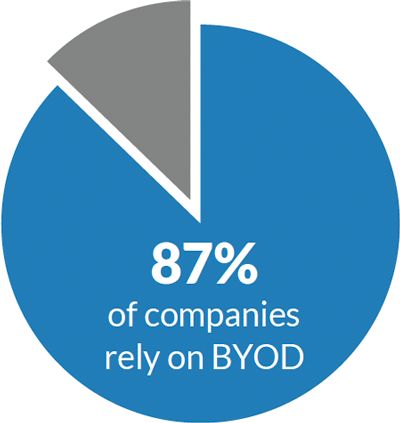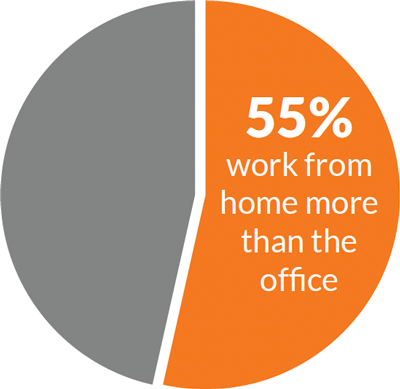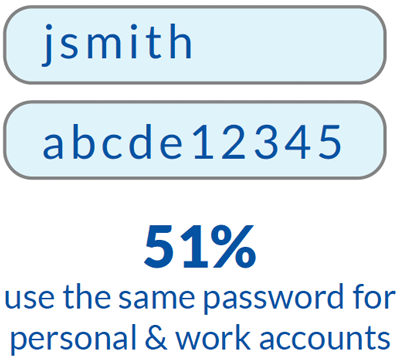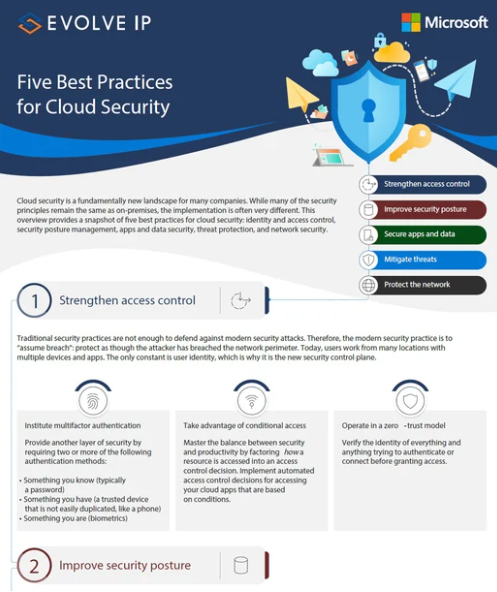
Executive Guide to Implementing a Secure BYOD Policy
Many companies are beginning to implement Bring Your Own Device (BYOD) policies. The policies can be great: they cut costs and let employees work on familiar devices.
As easy as it would be to send out a mass email to all of your employees letting them know to bring their own devices the next day – it’s not as simple as that. These policies can have their fair share of issues if not carefully planned for and monitored.
The experts at Evolve IP are here to provide you with a detailed guide on how to implement a secure BYOD policy.
One of the biggest challenges to implementing a safe BYOD policy is overcoming security issues. The team at Evolve IP can help you overcome these challenges so that your employees can enjoy a more comfortable and flexible workplace. We can provide best-in-class unified communications solutions, including security and Virtual Desktop Infrastructure, to ensure that your BYOD policy is as painless as possible.
What is a BYOD policy?
BYOD is an acronym for Bring Your Own Device. It allows employees to work on personal devices. This could include laptops or tablets, but it does need to be a device that employees can use to access any important applications or software that are crucial to the work.
When allowing employees to “bring their own device,” it is extremely important that companies create a BYOD policy. This policy will describe and define everything BYOD-related. A policy could include compatibility requirements, rules on what is or is not an acceptable device, security requirements (such as antivirus software), and anything else that may be necessary to include.
Don’t worry – we’ll dive more into what to include in a BYOD policy and how to implement it.
Why is BYOD Becoming so Popular?
In a word, BYOD is popular because it can benefit both employers and employees. According to Insight, 87% of companies rely on employees using personal devices to access work-related applications and software. If your company already allows this of employees, then you’re already overdue for a bulletproof BYOD policy.
With the rise of remote and hybrid work, a BYOD policy may make it easier for employees to do their work.
Have you ever had an employee forget to save their work onto the cloud after working from home? How about troubleshooting with IT on a company laptop? Or the company laptop breaking and needing repair?
Using two different devices can be frustrating for employees, but equally frustrating for management and your IT department. Optimizing personal devices so that employees have access to everything they need maximizes the productivity of hybrid and remote employees.
The Need for BYOD Security

There are some security risks that come with employees using their own devices for work.
Perhaps the most important security risk to consider is viruses and malware attacks. According to Security Magazine, only 42% of businesses have malware protection for employee devices. One click on a scam email and an employee could accidentally give a hacker access to everything on their device. And your server.
Another security risk is the potential for an employee to lose their device, and the data contained on it. If the device isn’t properly protected with dual-factor authentication, all of the files on a device could be stolen.
Of course, these are not the only security risks that come from implementing a BYOD policy. Additional common BYOD security issues include the following:
- User downloading unsafe content or apps
- Data leaks
- Regulation compliance
- Outdated security software
- Device management logistics
- Inability to control endpoint security
You can safeguard against the inherent risks of BYOD by having a solid, black-and-white standard and protocols.
Business leaders should either implement a BYOD policy or to not allow employees to use personal devices at all. This will make it easier for your IT team to close in and mitigate any potential security threats in your network.
One click on a scam email and an employee could accidentally give a hacker access to everything on their device.
The Benefits of BYOD
There are many benefits that come from implementing BYOD in a work space. Want the short version? Take a look at our blog: 5 Key Advantages of BYOD. As previously mentioned, BYOD has its perks for both employers and employees.
#1
Up-to-date technology: it can take immense time and budget to get employees the latest greatest phones, tablets, and laptops. But that is probably what they will buy for themselves.
#2
BYOD supports flexible work arrangements, which employees increasingly prefer
#3
Enables realtime or delayed collaboration, especially when integrated with unified communications platforms and messaging software.
#4
When employees can use a device that they are comfortable with, they may work faster and better.
Here are some of the other ways BYOD is a boon to business leaders:
Decreased Hardware Cost
According to Techvera, businesses spend an average of 4-6% of revenue on IT. Just one employee may use a CPU, monitor, keyboard, and mouse. Microphones, speakers, webcams, and external hard disks are additional parts that an employee may use. Of course, even these don’t account for all of the hardware that an employee, or an entire department, needs.
When employees bring their own devices, companies save big. In fact, Insight reports that companies save an average of $350 per employee, every year.
Typically, workers that use BYOD bring laptops, tablets, and smartphones to work. These devices are all-in-one machines with no need for external accessories. Laptops are equipped with built in webcams and microphones.
Bottom line? A BYOD policy can result in huge savings for businesses.
 Case Study: Johnson Investment Council
Case Study: Johnson Investment Council
Watch how Johnson Investment Counsel – one of the Midwest’s largest financial advisory firms – enabled all of their employees to work from home, consult with clients, handle investment trades, and manage their business seamlessly.
Savings on Maintenance and IT
Repairing and maintaining hardware can be expensive. IT staff have to constantly update software and fix issues that impair employees ability to work. When workers bring their own devices, you can spend less on updating and maintaining hardware. Personal device updates are user friendly and can begin with just the click of a button. When IT staff are not bogged down by providing general maintenance, they have more time to look into technological solutions that can save the company time and money.
Increased Mobile Productivity
We all know the struggle of being stuck at the doctor’s office or in traffic, thinking that you could be getting work done instead. When businesses implement BYOD policies, employees can work on their mobile devices no matter where they are. According to Tech Radar, about 73% of employees work from their smartphone. While mobile devices are generally used for answering work emails and calls, they can also be used for drafting documents, creating graphics, and more. This gives employees the opportunity to work on the go, so that they don’t have to catch up on work.
Remote and Hybrid Capabilities
Remote and Hybrid Capabilities It’s no secret that the modern workforce prioritizes having a flexible workday. This means that they can work from home or in the office, as well as on the go. According to Apollo Technical, a 2021 survey showed that 55% of respondents said they work from home more than they work in the office.
What makes BYOD and remote work fit so seamlessly is the capability for employees to access everything that they need from their own device. When employees have to work in the office on one device and work from home on their personal device, they may lose access to important software and documents.
While there are ways to combat this, such as Virtual Desktop Infrastructure (VDI), implementing BYOD makes things simpler. Employees can work in the location they feel most productive and have access to everything that they need to have a successful work day.

Deciding if BYOD is Right for Your Company
BYOD is not a good fit for every company. Sometimes, a more traditional technology approach is what works best. If you’re considering implementing BYOD, but you’re unsure as to if it’s the right fit, ask yourself these questions:
- Do our employees work from home, in the office, or some combination of both?
- Does our office offer quiet working spaces to increase productivity?
- Does our business spend significant money on IT and hardware?
- Do we have issues with accessibility when employees work from home?
- Do some employees already use personal devices for work?
- Do our employees handle sensitive data on a daily basis?
What may be the most important thing when considering BYOD is if employees are interested in it. If you implement a BYOD policy only to find that there are only a handful of workers who use it, you’ll have wasted valuable time and effort. Be sure to talk to your employees and see what they think, as well as consider the risks and benefits of implementing this kind of policy.
 What is Virtual Desktop Infrastructure?
What is Virtual Desktop Infrastructure?
Virtual desktop infrastructure (VDI) encompasses those solutions that centralize the hosting of business applications for an organization. Learn more about the three types of VDI, costs, and options in this in-depth blog.
Use Password Provisions and Device Authentication
Regardless of whether a device is personal or provided by the workplace, all devices should be password protected with dual-factor authentication. This includes the device itself, as well as any important websites and applications.
According to Thrive My Way, 51% of people use the same password for personal and work accounts. For work accounts, passwords should be randomly generated and changed every 30 days to avoid any security issues.
Passwords are the first barrier between a hacker and sensitive data. When employees understand the importance of password safety and device authentication, your company’s data will be better protected.
Use Mobile Device Management (MDM)
Mobile Device Management (MDM) is an excellent way for companies to have control over personal devices used for work. MDM allows companies to remotely access and manage mobile devices that have been bought and distributed by the company. Here are some of the features that come with Evolve IP’s Mobile Device Management capabilities:
- Device location tracking
- Prevent the use of certain device features
- Deploy custom and standard application configurations
- Remotely lock lost or stolen devices
- Application installation approvals
These are only a few of the capabilities that come with our Mobile Device Management, and are features you should absolutely work on implementing for your BYOD program. With us, you can also receive reports on battery and disk usage, the model and version of the device, as well as the owner of the device. MDM is a great solution to keeping devices secure and properly configured.
How We Help
Evolve IP’s identity and access management solution with single sign-on and multi-factor authentication empowers businesses to establish a new level of security.

Deploy VDI or DaaS Offerings
Virtual Desktop Infrastructure (VDI) and Desktop-as-a-Service (DaaS) are a good fit for workers who choose to bring their own device or use mobile devices when not in the office. VDI enables employees to use a virtual version of their desktop from work.
This is especially useful for employees who have to unexpectedly work remotely. They can easily access everything that they would normally have on their work computer, right on their personal device.
Desktop-as-a-service is a conduit for enabling VDI through cloud computing. It delivers a secure strategy for implementing BYOD by providing the necessary virtual framework and management, regardless of the device.
With DaaS, you don’t have to worry about the brand, operating system, or version. All you have to do is plug and play.
How We Help
Evolve IP even offers a secure managed DaaS system that makes it easier to enable and maintain virtual desktop infrastructure, while providing the support and expertise needed to fully embrace BYOD.
Deploy VDI or DaaS Offerings
Enforce Regular Data Backups We all know how important it is to back up important information on a regular basis. This becomes even more important when mobile and personal devices are brought into the picture.
You can go about data backups in two ways.
- Employee Backups – The first is by training employees to back up their data themselves. In this situation, you would have to send out reminders to employees.
- Automated Backups (Recommended) – The second way is through leveraging solutions that offer automatic backup. This enables IT administrators to remotely backup data on devices and provide access to users whenever they need it. This takes one more thing off of the employee’s plate and reduces the risk of an incomplete backup.
How We Help
Evolve IP partners with Veeam, a leading provider of cloud-based back-up solutions to help businesses keep an up-to-date copy of their virtualized applications and files, securely in Evolve IP’s cloud.
Install Antivirus and Anti-Malware Technology
You probably know someone who has fallen for a scam and had a virus unknowingly installed on their device. It happens more often than we think. To defend devices from viruses and malware attacks, it’s important to install protective software. There are a variety of technologies that provide different levels of protection against cybersecurity threats.
Additionally, it is always important to provide cybersecurity training at least once a year. This will remind your employees about the importance of avoiding phishing scams and risky websites.
How We Help
Evolve IP leverages industry’s leading DDoS detection and protection provider, Cloudflare to mitigate the attacks and bolster its defense-in-depth approach to security. Additionally, Evolve IP’s virtual desktop solution includes world-class antivirus and antimalware software technology to protect your device from external threats.
Streamline Your Platforms
When implementing a BYOD policy, ensure that all devices are using the same communications and collaboration platforms. It doesn’t help if one employee uses Google applications for collaborative work when another uses Microsoft applications. Require your employees to use a single collaboration tool.
According to a remote working survey that Evolve IP conducted, an average person uses 3.5 number of collaboration tools. By leveraging a single, unified communications and collaboration solution, such as Evolve IP’s, businesses can reduce costs incurred due to overlapping tools, save time otherwise lost by jumping from one application to the other.
This will increase productivity and make it easier for employees to communicate, no matter where they are or what device they are using. Streamlining your platforms will reduce inaccessibility and security issues by decreasing the number of applications used and sign-ins required to complete a work day.
How We Help
Unified Communications and Collaboration tools reduce overlap and simplify your employee’s experience.
Establish Privacy Provisions
Privacy is a major concern among business owners trying to implement BYOD. When a device has both personal and work-related information on it, there’s an inherent fear that privacy issues will show up somewhere along the line. Businesses have to consider the best way to protect both company and personal data and media.
No employee wants their company’s IT team snooping around their phone and no business wants their employers getting access to private company information.
Fortunately, when using a quality virtual desktop software, you can separate work life from personal life. When used the right way, virtual desktops can enable access only to work-related applications and software. For example, a company IT staff member would not have access to the photos, text messages, or private apps on an employee’s phone.
A great BYOD policy will contain rules and restrictions as to what an IT member can and cannot access, as well as when they are allowed to access things. By implementing a secure identity and access management software, virtual desktop solution and a well-written BYOD policy, you can protect your employees and your company.
Provide IT Support for BYOD
Any device will require maintenance, updates, and support. When employees begin to use their personal devices for work, they may need support from the IT team to keep their device in working condition. Some tasks, such as Operating System updates, are fairly simple and can be done by most employees. Other tasks, such as data maintenance or software issues, may require a knowledgeable IT staff member.
It’s important to outline the services your IT staff will provide in the BYOD policy. You can also include maintenance schedules to remind employees of when IT staff will update their devices.
Remember – employees will use the BYOD guide to refer back to when they have a question, so be as specific as possible.
Conduct Regular BYOD Training for Employees
Any employee who chooses to use BYOD in the workplace should attend proper training. This means that they are informed of the requirements within the policy. It is important to stress the importance of protecting both the employees and the company’s information privacy.
Building a BYOD policy can be tricky to navigate. Be sure to include employees in the process so you can hear their concerns. If a BYOD policy is not convenient for employees, they won’t want to use it. During training, ask for suggestions as to how the program could be improved to increase employee productivity and convenience.

Five Best Practices for Cloud Security
Cloud security is a fundamentally new landscape for many companies. While many of the security principles remain the same as on-premises, the implementation is often very different. Click on the link below to read an overview of the five best practices for cloud security.
8 step implementation plan for BYOD
Implementing a BYOD policy is just as important as writing one. It’s not as easy as simply inviting all of your employees to bring their own devices and fire up. It will take a few months, perhaps even longer, to get started. We have created an 8-step BYOD implementation plan for you to make the process a little bit simpler.
1. Policy Creation
The first step is to write a BYOD policy. Circle back to the components above (Defining a Simple and Secure BYOD Policy). Multiple parties, including legal and HR, will need to review your BYOD policy. Consider getting managerial feedback, too.
A BYOD policy can become tricky very quickly. Be sure that your policy is clear. If an employee becomes confused after reading it, then you may want to make adjustments.
Once you have created the policy, plan distribution, receipt acknowledgement, and enforcement protocol. Store it in an accessible location where employees can read it whenever they need to.
2. Audit Current Devices
All BYOD devices should be audited by a professional. When auditing devices for BYOD compliance, experts will look for security issues, storage space, and version/OS compatibility. There will be other factors that your team will want to audit, but those are the basics.
It is important to do this in a secure way that does not infringe on employee privacy. You may want to use a software that compiles this data for you, rather than having your IT staff manually go through the device.
3. Enroll Devices
The next step is to enroll the devices. You can use any sort of management software to do this, but an MDM solution is best as it accumulates all of the data for you. Enroll the devices into the MDM and it will immediately begin to provide remote management of the device.
Again, it is important that employees understand what your IT team is and is not allowed to access through the Mobile Device Management platform.
4. Configure Devices in the Cloud
You’ll want to make sure that the devices are configured in the cloud. This will make it easy to enable DaaS solutions, as it is equipped through cloud computing. By putting devices on the cloud, you also ensure consistent data backups.
Cloud configuration makes it easy for employees to collaborate and for IT staff members to monitor and manage each device. Doing this will guarantee good device oversight.
5. Protect User Privacy
There are a few different ways that you can protect user privacy. You should make sure that your IT staff are trained in how to properly use the DaaS solution. This will restrict their access to sensitive personal information and media.
For example, if you feel that requiring IT staff to accept or decline app installations is a breach of privacy, you don’t have to use that feature on your DaaS platform. Instead, require that employees download a specific set of applications that are most important for work completion. This way, your IT staff can monitor those specific apps, rather than the applications that have been downloaded on the device as a whole.
Essentially, it is important to establish boundaries between work data and personal data. This means enabling privacy restrictions for your virtual desktop application.
6. Separate Personal and Professional
Every employer wants to ensure that their employees are keeping professional and personal life separate. However, it is important to remember that it is a two way street: just like employees should not be completing personal tasks at work, they also should not be accessing work materials outside of work hours. These boundaries can become blurred when your personal and professional activities happen on the same device.
Many companies have started to monitor mouse movements to remotely determine if an employee is actively working. You can also monitor work application usage during working hours.
If you find that some employees are struggling with maintaining a work-life balance, you can encourage them to sort their work-related applications into a folder. This both physically and mentally compartmentalizes work time from personal time.
7. Manage Data Usage
BYOD policies allow for better remote capabilities. This means that some employees may take their work on the go. Devices may sometimes be used where internet connections are not available, which will require mobile data use. Be sure to have notifications set up that tell employees how much data they are allocated, and when it is nearly depleted.
You should also enable the devices to send notifications to your IT department about data usage. This is important information to collect over time. Long-term data usage information can inform you as to whether you are spending too much or too little on data for your employees’ devices.
8. Monitor All Devices
The last step in implementing a BYOD policy is monitoring the devices. If you choose a high quality DaaS platform, such as the one that Evolve IP offers, you will have access to a variety of monitoring capabilities. You can view data usage, application usage, location tracking, and more. Of course, all of these tasks can be done with privacy provisions to protect users.
By monitoring devices, you can determine what changes to make to your BYOD policy. Maybe, instead of allowing employees to utilize their personal devices, you want to start purchasing and assigning the devices. Or, perhaps you find that certain apps just aren’t as useful as others. All of this information can help you improve the BYOD experience for both your business and your employees.
Steps at a Glance
- Policy Creation
- Audit Current Devices
- Enroll Devices
- Configure Devices in the Cloud
- Protect User Privacy
- Separate Personal and Professional
- Manage Data Usage
- Monitor All Devices
Max Out the Value of BYOD With Evolve IP
Implementing a BYOD policy is an essential practice to gaining the most value from this arrangement. Team up with experts (like us) who will provide everything that you need to implement a successful and productive BYOD experience.
We provide Identity and Access management solutions, unified communication and collaboration platforms, Desktop-as-a-Service,and plenty more. Each of these services provides a multitude of benefits.
Get equipped to do more:
Remotely monitor devices and collect data for review.
Secure devices with authentication, single sign on, and antivirus protection.
Introduce a cloudbased, secure VDI that works on any device.
Keep track of devices using inventory features.
Remotely lock or locate devices to protect against data theft.
These are only a few of the ways BYOD can make your life easier. With these (and more) available solutions, you can feel confident that your BYOD policy will increase productivity without sacrificing security and management.

Simplify and future-proof your technology footprint with Evolve IP







It's nearly impossible to stay on top of every change in technology. Partner with Evolve IP and gain the combined experience of hundreds of technologists, all acting as an extension of your IT team. Helping you do more with less.


